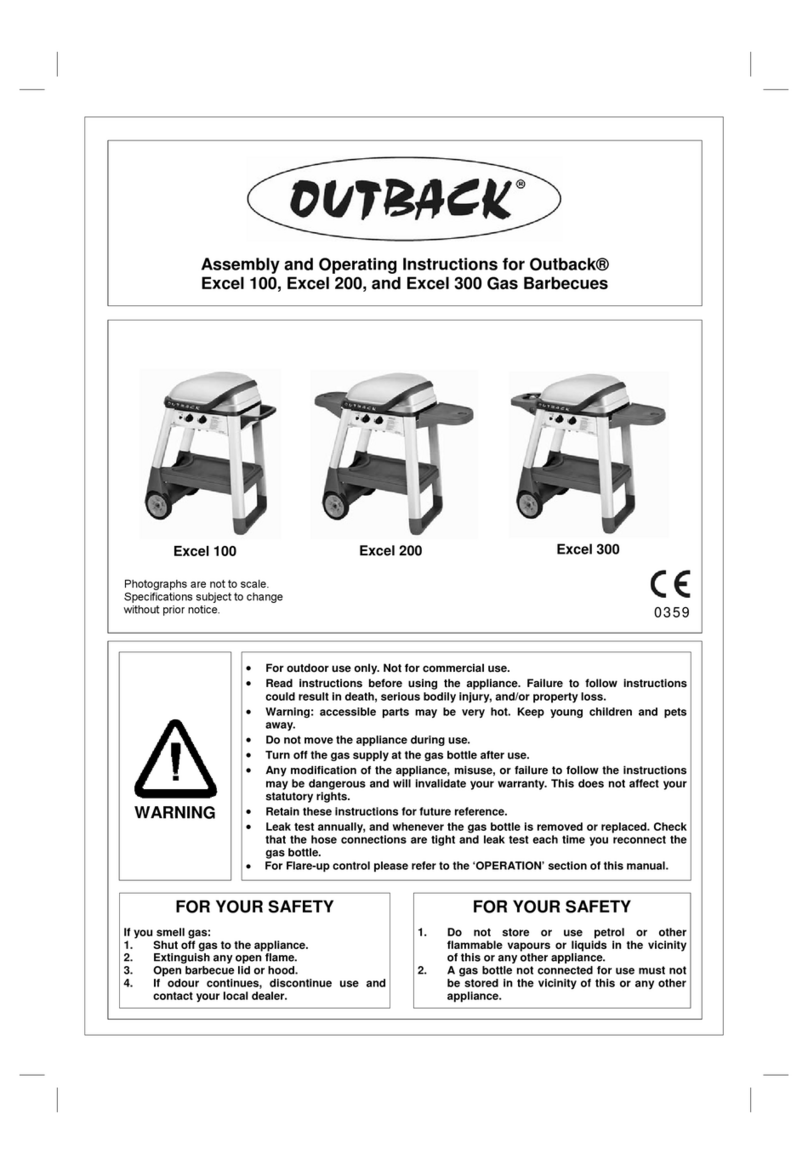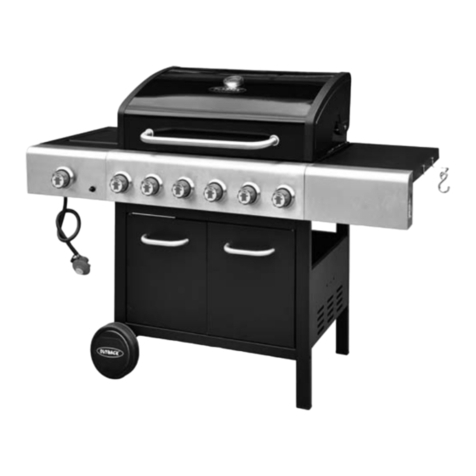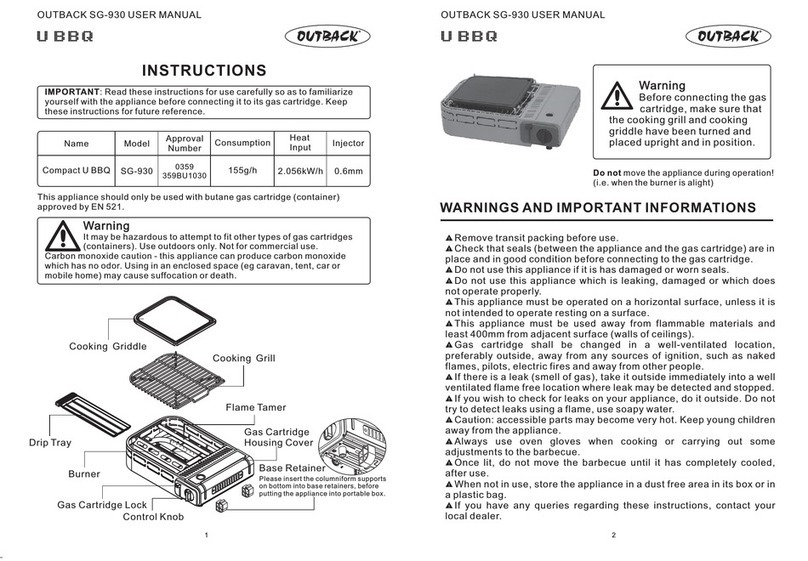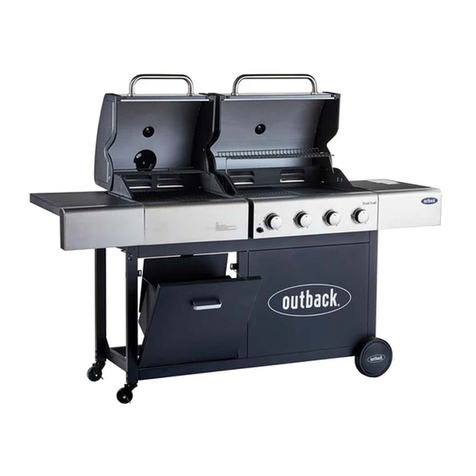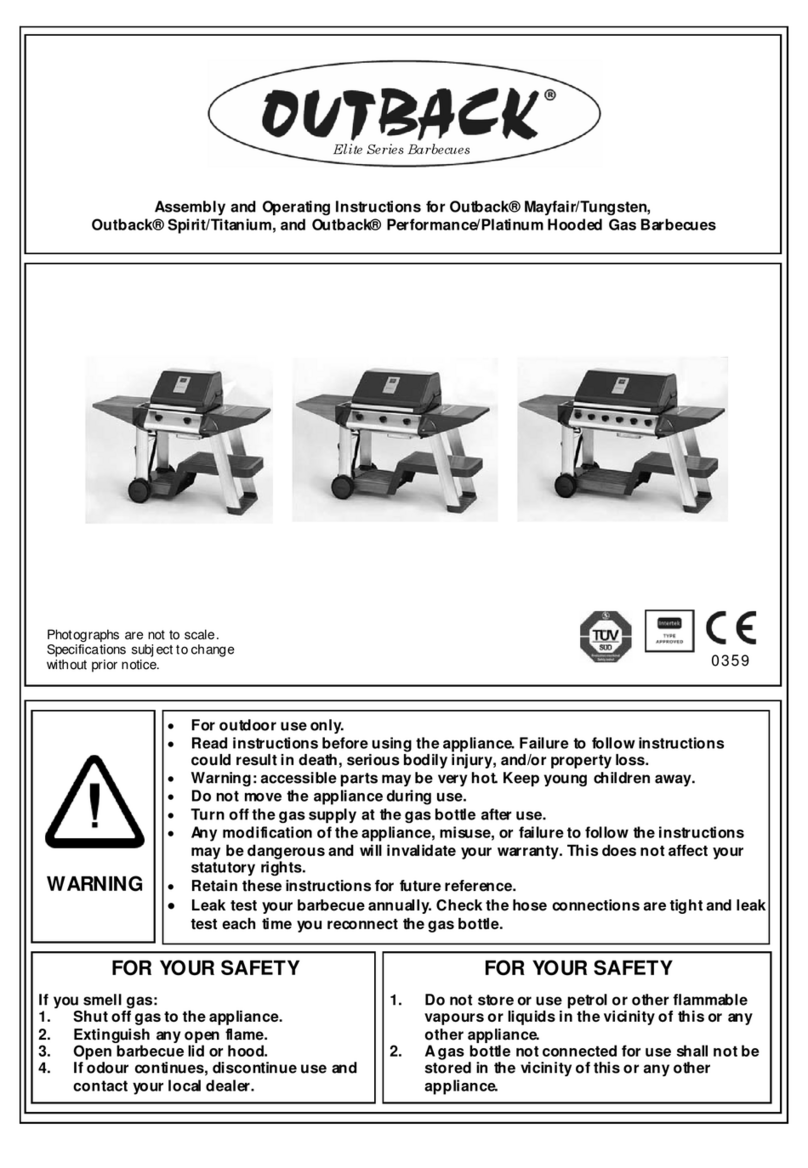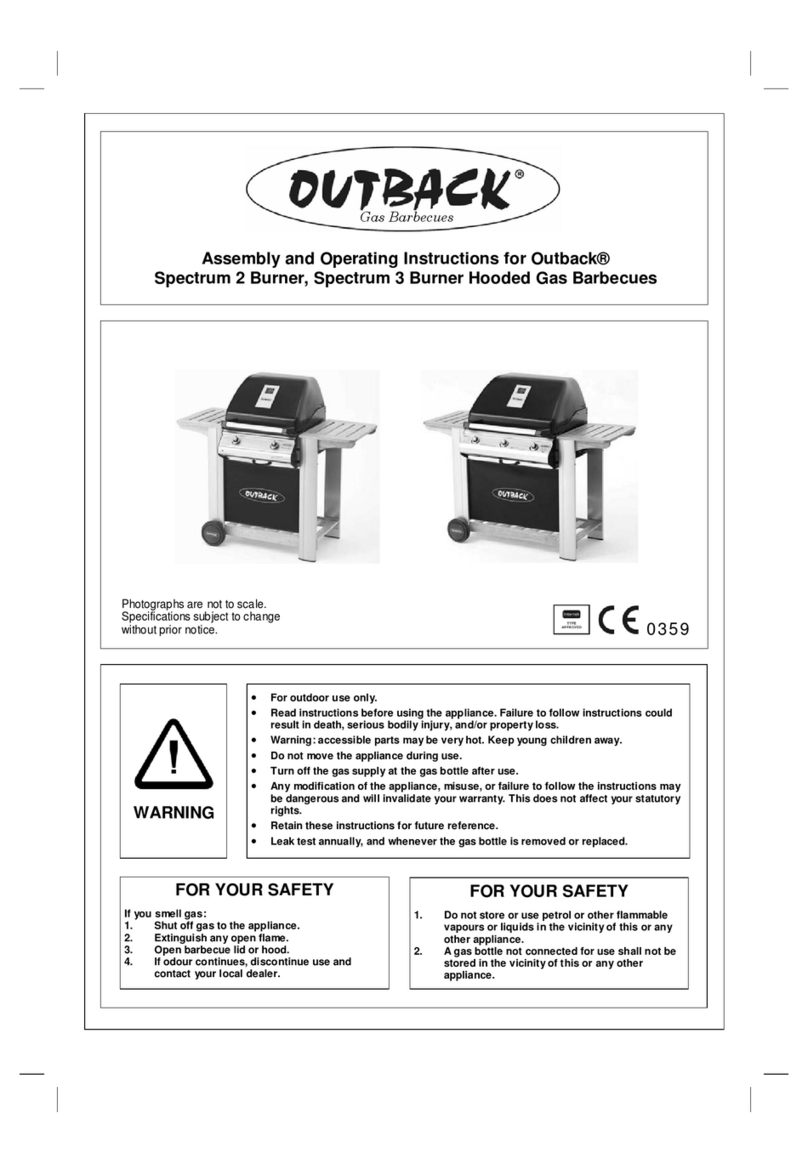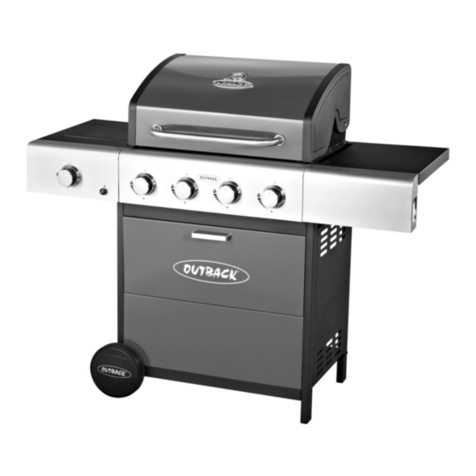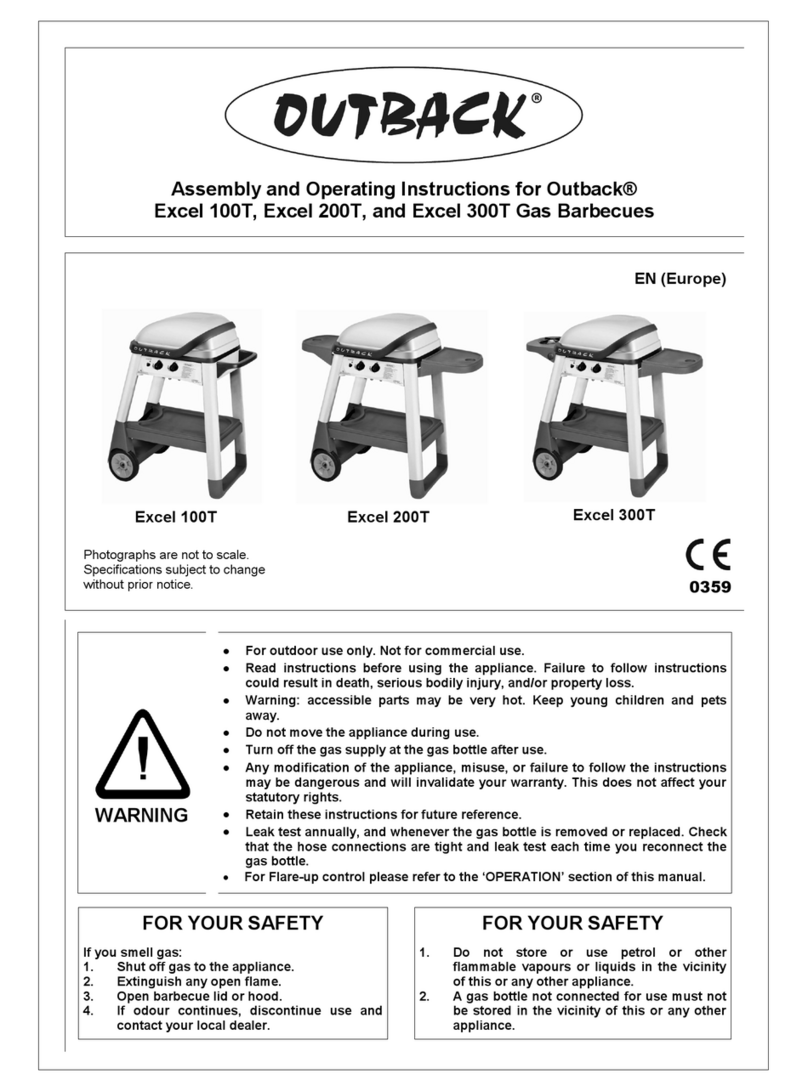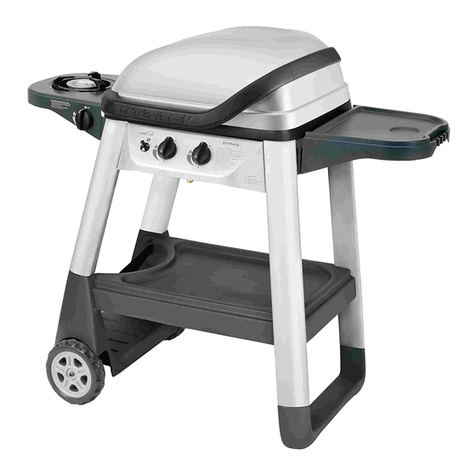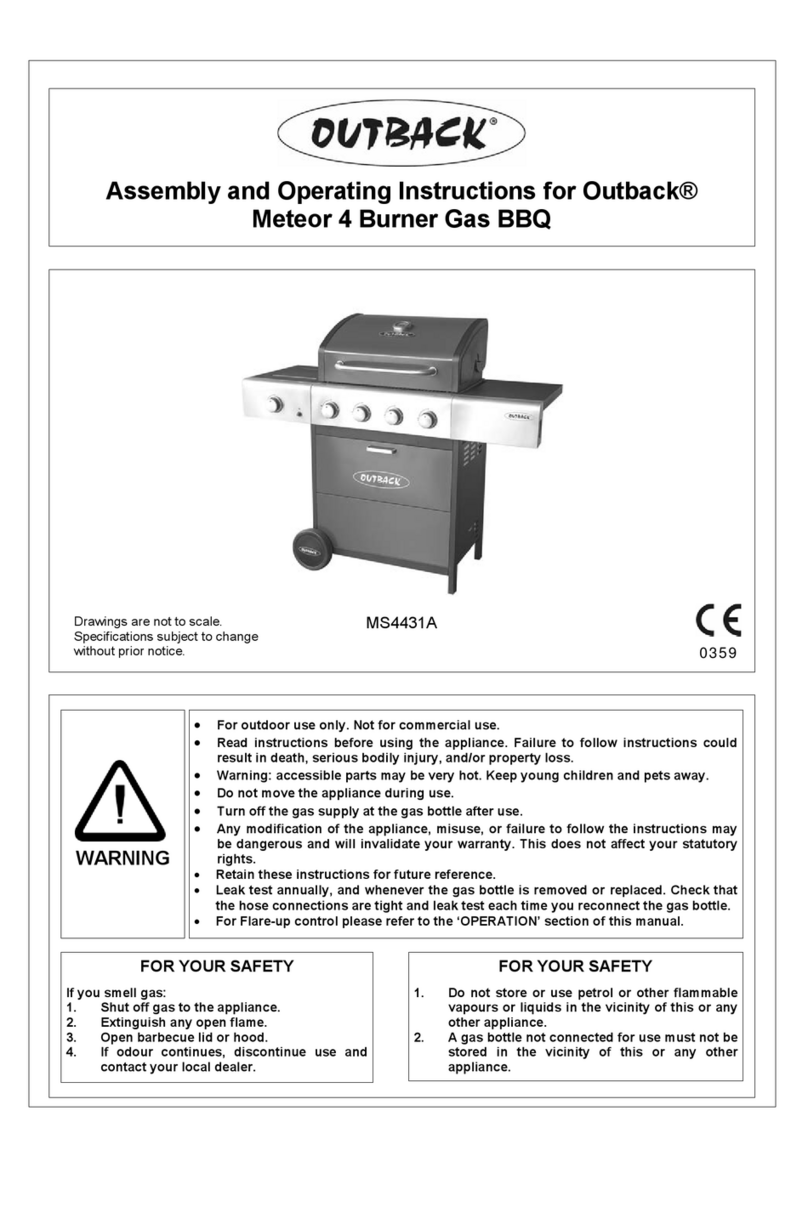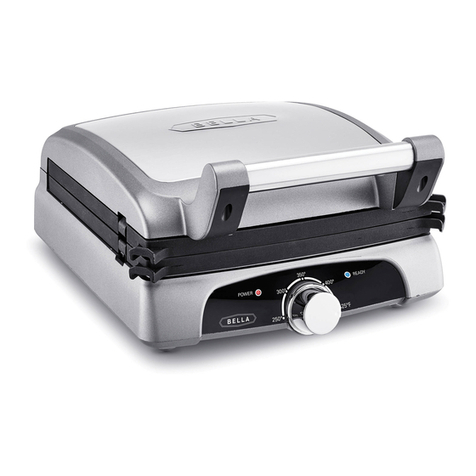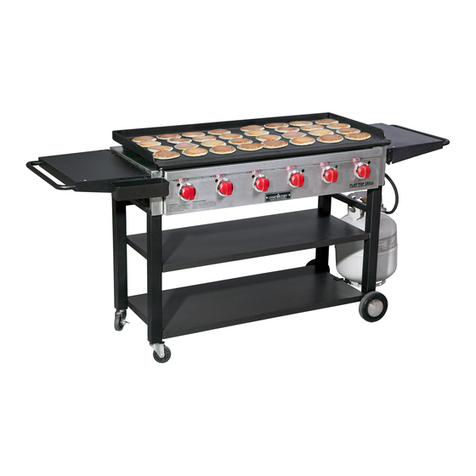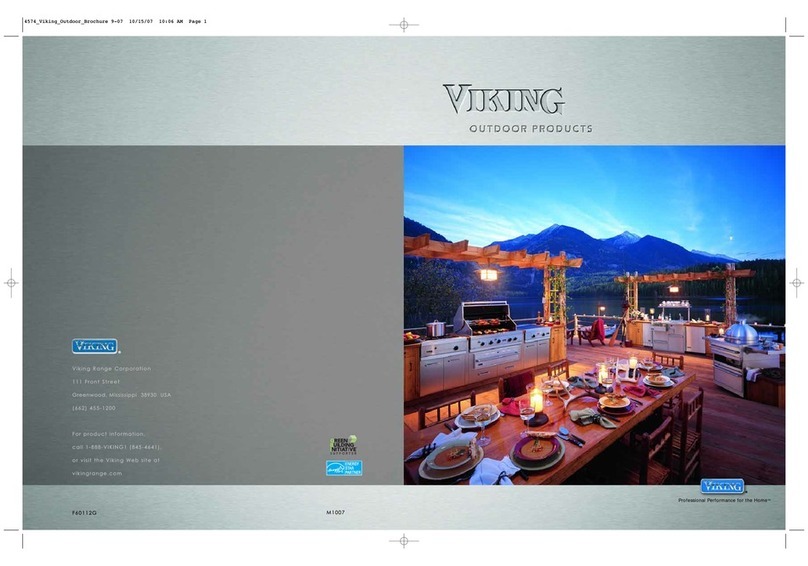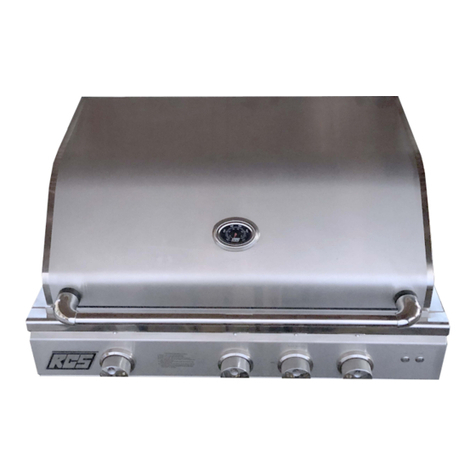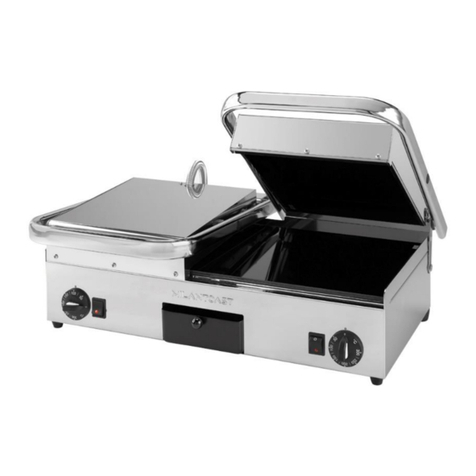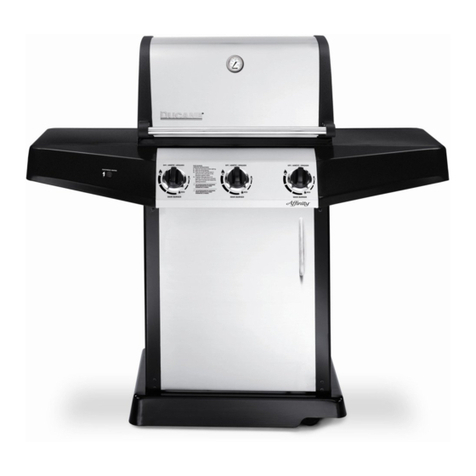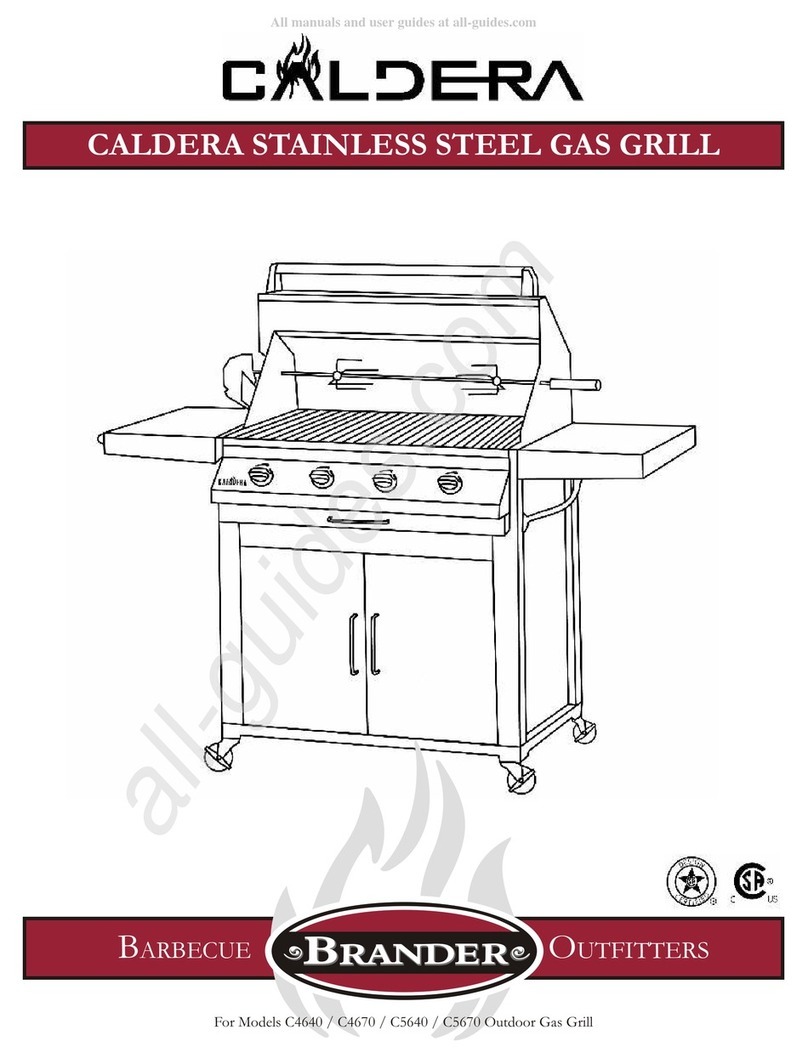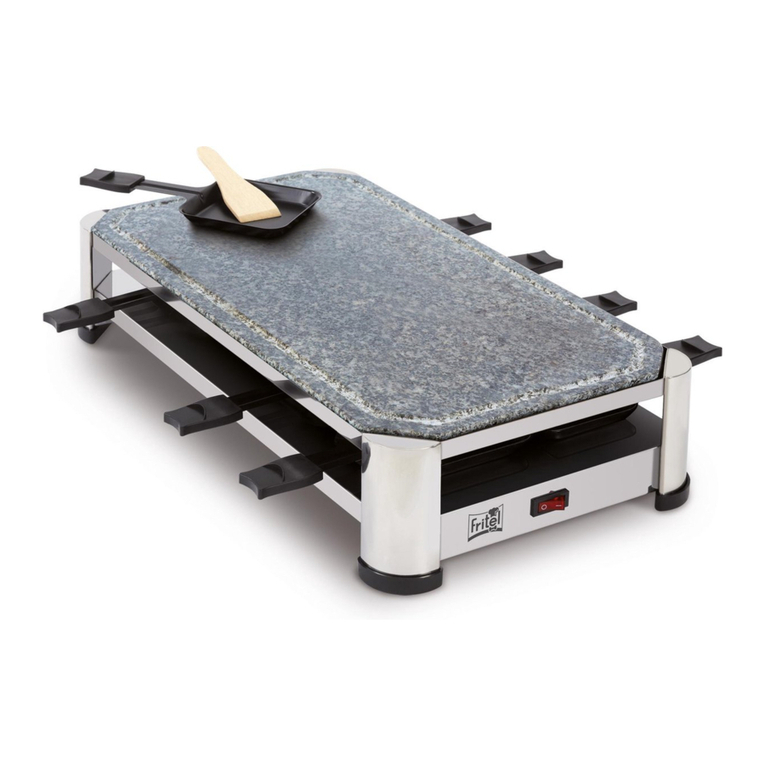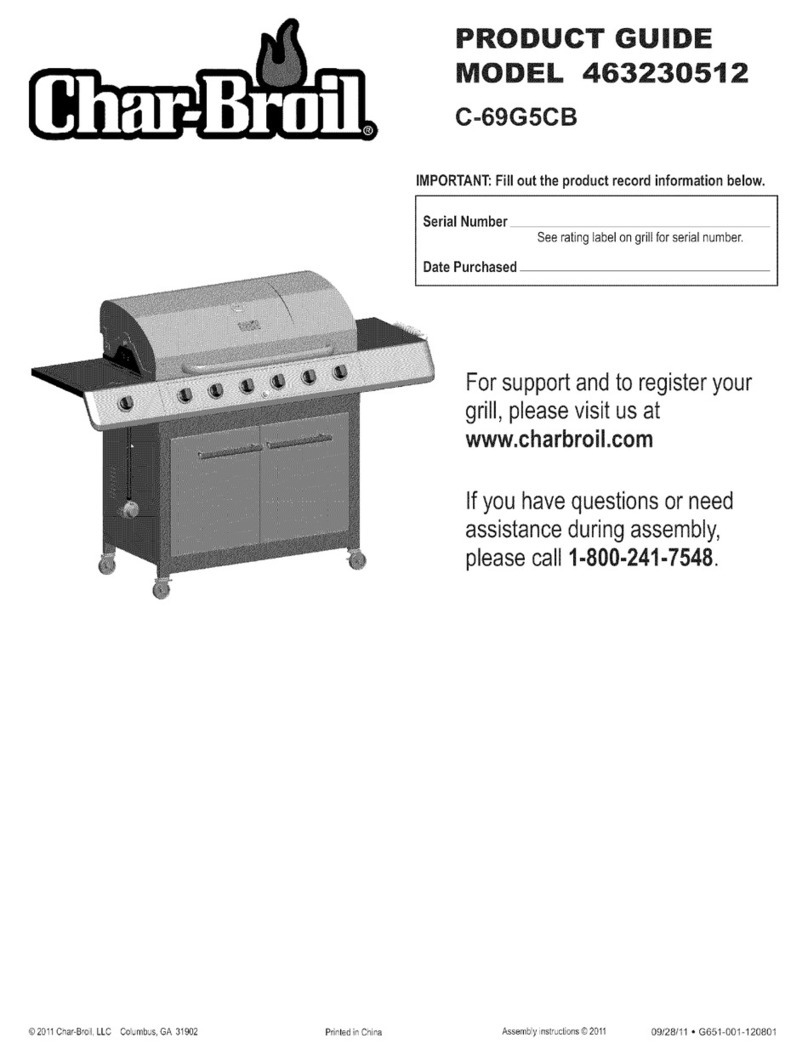19
H2. Precautions
Do not obstruct any ventilation openings in the
barbecue body. Position the gas supply bottle on
level ground next to the barbecue and safely away
from any source of heat. Should you need to
change the gas bottle, confirm that the barbecue is
switched off, and that there are no sources of
ignition (cigarettes, open flame, sparks, etc.) near
before proceeding. Inspect the gas hose to ensure
it is free of any twisting or tension. The hose
should hang freely with no bends, folds, or kinks
that could obstruct free flow of gas. Apart from the
connection point, no part of the hose should touch
any hot barbecue parts. Always inspect the hose
for cuts, cracks, or excessive wear before use. If
the hose is damaged, it must be replaced with
hose suitable for use with LPG and meet the
national standards for the country of use. The
length of the hose shall not exceed 1.5m. N.B.-The
date on U.K. orange hose is the date of
manufacture, not the expiry date.
H3. Fixing the Regulator to the Gas Bottle
Confirm all barbecue control knobs are in the off
position. Connect the regulator to the gas bottle
according to your regulator and bottle dealer’s
instructions.
H4. Leak Testing (To be performed in a well-
ventilated area.)
Confirm all control knobs are in the off position.
Open the gas control valve on the bottle or
regulator. Check for leaks by brushing a solution of
½ water and ½ soap over all gas system joints,
including all valve connections, hose connections
and regulator connections. NEVER USE AN
OPEN FLAME to test for leaks at anytime. If
bubbles form over any of the joints, there is a leak.
Turn off the gas supply and retighten all joints.
Repeat test. If bubbles form again, do not use the
barbecue. Please contact your local dealer for
assistance. Leak test annually. Check that the
hose connection to the barbecue is tight and leak
test whenever the gas bottle is reconnected.
I. Operation
I1. Warning
• Before proceeding, make certain that you
understand the IMPORTANT INFORMATION
section of this manual.
I2. Preparation Before Cooking
To prevent foods from sticking to the cooking grill,
please use a long handled brush to apply a light
coat of cooking or vegetable oil before each
barbecuing session. (Note: When cooking for
the first time, paint colours may change
slightly as a result. This is normal and should
be expected.)
I3. Lighting the Barbecue
• Open the barbecue hood.
• Ensure all knobs are in the off position. Open
the gas control valve on the gas bottle or
regulator.
• Push and turn the leftmost control knob to the
high position. Press the ignition button rapidly
several times until left portion of the burner is
lit. If burner fails to ignite, turn control knob to
the off position and turn gas off at the bottle or
regulator. Wait five minutes, then repeat the
above steps. After successful lighting of the
left side, ignite the remaining portion of the
burner. If the burner fails to ignite after
following above procedure, turn all the knobs
to the off position. Close the gas valve on the
gas bottle. Wait 5 minutes, then repeat the
above steps. If the barbecue still fails to light,
please refer to the manual ignition instructions
in section below.
• After ignition, the burner should be burned at
the high position for 3-5 minutes in order to
preheat the barbecue. This process should be
done before every cooking session. The hood
(where applicable) should be open during
preheating.
• After preheating, the burner should normally
be turned down to a lower setting for best
cooking results.
I4. Manual Ignition Instructions
• Insert lit match through the match-lighting hole
on the right side of the barbecue.
• Push and turn the rightmost control knob anti-
clockwise to the high position.
• After the right portion of the burner is lit, light
the remaining portion of the burner.
• If burner fails to ignite, contact your local
dealer for assistance.
• After ignition, the burner should be burned at
the high position for 3-5 minutes in order to
preheat the barbecue. This process should be
done before every cooking session. The hood
(where applicable) should be open during
preheating.
• After preheating, the burner should normally
be turned down to a lower setting for best
cooking results.
I5. Grill Cooking
The burner heats up the lava rock underneath the
grill, which in turn heats the food on the grill. The
natural food juices produced during cooking fall
onto the hot lava rock below and vaporise. The
subsequent rising smoke bastes the food, as it
travels upwards, imparting that unique barbecued
flavour. More even cooking of food will be






















